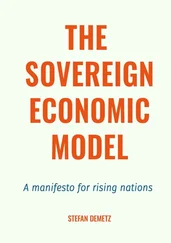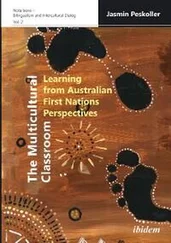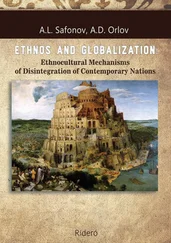I cunningly opened a private bank account into which I diverted a portion of my savings … This went only until I had saved eighty pounds … [I bought] a span of oxen with yokes, gear, plough and the rest of agricultural paraphernalia … I now purchased a small farm … I cannot too strongly recommend [farming] as a profession to my fellow man … They should however adopt modern methods of profit making.
An extraordinary piece of evidence supporting the economic dynamism and prosperity of African farmers in this period is revealed in a letter sent in 1869 by a Methodist missionary, W. J. Davis. Writing to England, he recorded with pleasure that he had collected forty-six pounds in cash “for the Lancashire Cotton Relief Fund.” In this period the prosperous African farmers were donating money for relief of the poor English textile workers!
This new economic dynamism, not surprisingly, did not please the traditional chiefs, who, in a pattern that is by now familiar to us, saw this as eroding their wealth and power. In 1879 Matthew Blyth, the chief magistrate of the Transkei, observed that there was opposition to surveying the land so that it could be divided into private property. He recorded that “some of the chiefs … objected, but most of the people were pleased … the chiefs see that the granting of individual titles will destroy their influence among the headmen.”
Chiefs also resisted improvements made on the lands, such as the digging of irrigation ditches or the building of fences. They recognized that these improvements were just a prelude to individual property rights to the land, the beginning of the end for them. European observers even noted that chiefs and other traditional authorities, such as witch doctors, attempted to prohibit all “European ways,” which included new crops, tools such as plows, and items of trade. But the integration of the Ciskei and the Transkei into the British colonial state weakened the power of the traditional chiefs and authorities, and their resistance would not be enough to stop the new economic dynamism in South Africa. In Fingoland in 1884, a European observer noted that the people had
transferred their allegiance to us. Their chiefs have been changed to a sort of titled landowner … without political power. No longer afraid of the jealousy of the chief or of the deadly weapon … the witchdoctor, which strikes down the wealthy cattle owner, the able counsellor, the introduction of novel customs, the skilful agriculturalist, reducing them all to the uniform level of mediocrity—no longer apprehensive of this, the Fingo clansman … is a progressive man. Still remaining a peasant farmer … he owns wagons and ploughs; he opens water furroughs for irrigation; he is the owner of a flock of sheep.
Even a modicum of inclusive institutions and the erosion of the powers of the chiefs and their restrictions were sufficient to start a vigorous African economic boom. Alas, it would be short lived. Between 1890 and 1913 it would come to an abrupt end and go into reverse. During this period two forces worked to destroy the rural prosperity and dynamism that Africans had created in the previous fifty years. The first was antagonism by European farmers who were competing with Africans. Successful African farmers drove down the price of crops that Europeans also produced. The response of Europeans was to drive the Africans out of business. The second force was even more sinister. The Europeans wanted a cheap labor force to employ in the burgeoning mining economy, and they could ensure this cheap supply only by impoverishing the Africans. This they went about methodically over the next several decades.
The 1897 testimony of George Albu, the chairman of the Association of Mines, given to a Commission of Inquiry pithily describes the logic of impoverishing Africans so as to obtain cheap labor. He explained how he proposed to cheapen labor by “simply telling the boys that their wages are reduced.” His testimony goes as follows:
Commission:Suppose the kaffirs [black Africans] retire back to their kraal [cattle pen]? Would you be in favor of asking the Government to enforce labour?
Albu:Certainly … I would make it compulsory … Why should a nigger be allowed to do nothing? I think a kaffir should be compelled to work in order to earn his living.
Commission:If a man can live without work, how can you force him to work?
Albu:Tax him, then …
Commission:Then you would not allow the kaffir to hold land in the country, but he must work for the white man to enrich him?
Albu:He must do his part of the work of helping his neighbours.
Both of the goals of removing competition with white farmers and developing a large low-wage labor force were simultaneously accomplished by the Natives Land Act of 1913. The act, anticipating Lewis’s notion of dual economy, divided South Africa into two parts, a modern prosperous part and a traditional poor part. Except that the prosperity and poverty were actually being created by the act itself. It stated that 87 percent of the land was to be given to the Europeans, who represented about 20 percent of the population. The remaining 13 percent was to go to the Africans. The Land Act had many predecessors, of course, because gradually Europeans had been confining Africans onto smaller and smaller reserves. But it was the act of 1913 that definitively institutionalized the situation and set the stage for the formation of the South African Apartheid regime, with the white minority having both the political and economic rights and the black majority being excluded from both. The act specified that several land reserves, including the Transkei and the Ciskei, were to become the African “Homelands.” Later these would become known as the Bantustans, another part of the rhetoric of the Apartheid regime in South Africa, since it claimed that the African peoples of Southern Africa were not natives of the area but were descended from the Bantu people who had migrated out of Eastern Nigeria about a thousand years before. They thus had no more—and of course, in practice, less—entitlement to the land than the European settlers.
Map 16 (this page) shows the derisory amount of land allocated to Africans by the 1913 Land Act and its successor in 1936. It also records information from 1970 on the extent of a similar land allocation that took place during the construction of another dual economy in Zimbabwe, which we discuss in chapter 13.
The 1913 legislation also included provisions intended to stop black sharecroppers and squatters from farming on white-owned land in any capacity other than as labor tenants. As the secretary for native affairs explained, “The effect of the act was to put a stop, for the future, to all transactions involving anything in the nature of partnership between Europeans and natives in respect of land or the fruits of land. All new contracts with natives must be contracts of service. Provided there is a bona fide contract of this nature there is nothing to prevent an employer from paying a native in kind, or by the privilege of cultivating a defined piece of ground … But the native cannot pay the master anything for his right to occupy the land.”
To the development economists who visited South Africa in the 1950s and ’60s, when the academic discipline was taking shape and the ideas of Arthur Lewis were spreading, the contrast between these Homelands and the prosperous modern white European economy seemed to be exactly what the dual economy theory was about. The European part of the economy was urban and educated, and used modern technology. The Homelands were poor, rural, and backward; labor there was very unproductive; people, uneducated. It seemed to be the essence of timeless, backward Africa.
Читать дальше












